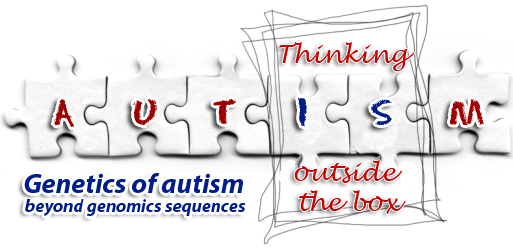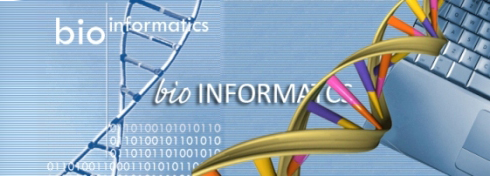Research Interests
Genetics of autism
My main research interest is investigating the underlying genetic and epigenetic factors in the etiology of autism spectrum disorder (ASD) with a focus on: identification of autism spectrum subtypes, examination of gene regulatory processes, and evaluation of integrated and systems biology approach.
Key Areas of Research Contributions (ongoing projects)
-
X Chromosome Inactivation in Females with Autism.
I published the first paper evaluating the role of X chromosome
inactivation (XCI), an epigenetic process, in females with autism (Talebizadeh et al., 2005). An increased X
chromosome skewness (XIS) was detected in individuals with autism compared to
unaffected females. XIS was also seen in 50% of the mothers with autistic
daughters. About 25% of X-linked genes may escape inactivation at least to somedegree. However, in vitro results from somatic cell hybrids may not reflectwhat happens in vivo. I analyzed the female/male gene fold expression ratio forX-linked and autosomal genes from different tissues. This study indicated thatfactors other than the XCI process may impact the expression of X-linked genesresulting in an overall similar gender expression for both X-linked and
autosomal genes (Talebizadeh et al., 2006).
Most recently, using an innovative integrated model including XCI status in
females with autism as subtyping, I discovered the potential role of a
transposon in regulating an X-linked ASD associated chromatin remodeling gene (Talebizadeh et al., 2019). Future
direction of this project will include developing robust analytical pipeline toenable screening repeated DNA sequences and identifying X-linked transposons inthe etiology of autism.
-
Subtyping in Autism.
Clinical heterogeneity is one of the main obstacles in
identifying causative genes for ASD. I have shown the effectiveness of applying
stratification methods to improve the detection of genetic risk factors related
to given subtypes: PTEN mutations in ASD subjects with
macrocephaly (Butler et al., 2005),
evidence at the gene scan level for both inter- and intra-family heterogeneity
as well as for gender-specific loci by developing/applying a
novel deep subject
stratification protocol (Talebizadeh et., al. 2013),
differential expression of a retrotransposon-derived long noncoding RNA in ASD
females with a skewed pattern of X chromosome inactivation (Talebizadeh et al., 2019), and
abnormalities in genes involved in metabolism in ASD subjects with obesity
(manuscript to be submitted). Future direction will include further evaluating
the role of genetic/epigenetic factors in these ASD subtypes: females with XIS
and affected subjects with obesity.
-
Mis Splicing in Autism.
I published one of the first papers demonstrating the importance
of evaluating changes at the alternative splicing level in autism (Talebizadeh et al., 2006). By screening
cDNA, I identified novel alternative splicing isoforms in neuroligin genes.
Later, I showed that the analysis of alternative splicing in lymphoblastoid
cell line samples had potential to reveal at least a subset of brain-related
deregulation of splicing machinery that might be implicated in autism (Talebizadeh et al., 2014). Using a
combination of subject stratification, sequence homology, and expression
profiling, I identified a previously uncharacterized gene isoform that was
differentially expressed in autistic females with XCI skewness compared to
controls (Talebizadeh et al., 2019).
Future direction will include using the developed protocols to further
investigate mis-regulation of alternative splicing in ASD subtypes.

-
Noncoding RNAs in Autism.
I contributed to the development of a bioinformatics program, snoTARGET, to predict target mRNAs for a group of noncoding
RNAs called snoRNA (Bazeley et al., 2008).
I published one of the first papers on the role of microRNAs in autism (Talebizadeh et al., 2008). I provided
evidence for a novel epigenetic mechanism in autism, demonstrating how a long
noncoding RNA may contribute to linking biologically relevant components of a
gene regulatory process (Talebizadeh et. al., 2019).
I identified differential expression of stress-related microRNAs as
contributing factors to a potential gene-environment interaction model i.e.,
prenatal maternal stress in autism (manuscript to be submitted). Future direction
will include further evaluating the role of noncoding RNAs in ASD subtypes:
females with XIS and affected subjects with obesity.
- AutGO: Autism Genetics Outcomes (Innovative Research Initiative.) The increasing emphasis on translational approaches to mental health research requires scientists from a broad range of disciplines to collaborate in the development of hypotheses and the design of studies. In the past five years, I have devoted enormous efforts in making a bridge between genetics and outcomes research to improve translational aspects of autism genetics research. This ongoing effort has resulted in launching, under my leadership, a unique initiative called AutGO, which introduces a novel integrated concept for research that utilizes data and principles of both genetics and outcomes research (Talebizadeh et al., 2018 & Talebizadeh et al., 2020). Furthermore, I organized an educational workshop in Kansas City, MO in 2017 to introduce this novel concept. Because gene-environment interaction studies may carry a great potential to identify findings that could improve patient health, they would benefit from patient engagement and utilizing the AutGO model. In recognition of my unique multi-faceted expertise (i.e., experience in leading both genetics and patient outcomes research studies), I was invited to serve as a member on the Newborn Screening Translational Research Network (NBSTRN) Steering Committee organized by the American College of Medical Genetics (2019-2021). In 2020, BioNexus KC, a regional non-profit organization, invited me to organize a series of autism webinars using the AutGO stakeholders’ engagement model. To date, I have organized and led six of these webinars and drafted an agenda for additional webinars in 2021. Future direction will include developing sustainable platform(s) for conducting AutGO research.
Bioinformatics
Objective: Examination of changes at a level beyond the genomic sequence may result in a complicated data, which requires sophisticated bioinformatics tools for an appropriate analysis. In collaboration with other researchers, we are interested in using bioinformatics approaches in detecting autism susceptibility gene-pathways in the etiology of autism.


